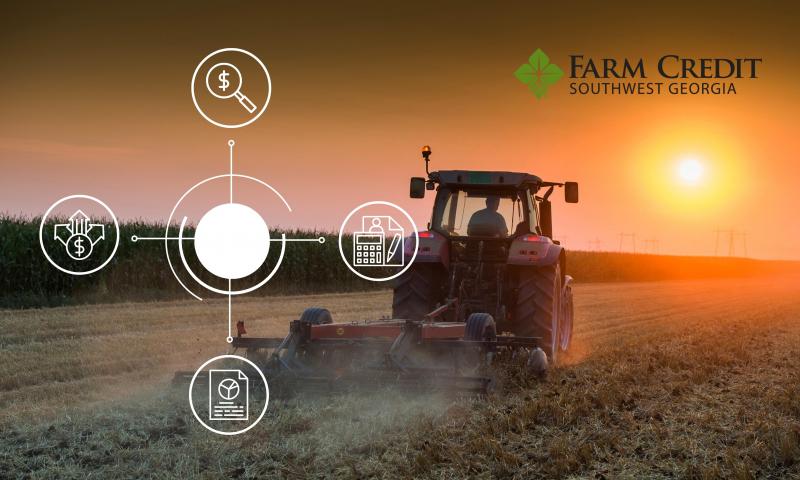A Scoreboard for Your Operation

It’s the beginning of the year and you are planning for successful planting, calving, operating, and harvesting seasons.
We know spreadsheets and office work are not your favorite tasks to tackle. However, managing a balance sheet is one of the most important things you can do as a manager of your farm business.
We’ve done the hard work and created a balance sheet for you. Download our document below and get started today!
Why complete a balance sheet? What is a balance sheet?
- Know your financial position.
- Make better management decisions.
- Compare your yearly performance.
Knowing the financial position of your farm operation is critical to its future success. One of the most important tools in helping you to understand the financials of your operation is the balance sheet. It depicts your financial position at a specific point in time.
Think of your farm’s balance sheet as a scoreboard on the health of your operation. Each year, it provides a point-in-time snapshot of your net worth: How is your operation doing financially? From one year to the next, it reveals trends, both good and bad: How are things progressing, where are my challenges? Used effectively, your balance sheet addresses the long-term viability of your operation.
A balance sheet is quite straight-forward: Current and noncurrent assets are listed on one side, current and noncurrent liabilities on the other side. The difference in the totals is an operation’s equity or the operation’s solvency.
Most businesses update their balance sheet at the end of the accounting period, such as the end of the tax year. Some check their numbers quarterly. For grain operators, post-harvest is a good time to update balance sheets because the information will be more accurate and provide more value. The best time for cow-calf operations is when calves are on the ground. However, it is important to think about your balance sheet as a living document. Lenders, such as Southwest Georgia Farm Credit, need this information to assess your business and can expedite loan approval when completed accurately.
The two main components of a balance sheet are assets and liabilities.
Assets - Let’s look first at the asset side of the balance sheet. Assets are everything owned by a business or individual. Current assets are considered “liquid”—those that are cash or can be turned into cash promptly, including checking and savings accounts or mutual funds, stored production, market livestock and growing crops, feed on hand, paid-for but not yet used inputs or other supplies, and accounts receivable.
Noncurrent Assets are those that can’t be readily sold, such as machinery and equipment, vehicles, breeding livestock, co-op stock, farmland, your house, other buildings, or a retirement account that is subject to government withdrawal penalties, etc.
Liabilities - Current liabilities are those that are due right away—usually within the next 12 months. These include accounts payable (such as for inputs, or land rent), farm taxes, current notes, and credit lines, accrued interest on operating or term loans, the current portion of principal due in 12 months, credit card debt, or loan payments to family members.
Noncurrent Liabilities include loans used to purchase assets that have a life-span of more than a year, such as vehicles, machinery, farm ground or a home. They also could include an agreement to buy out a partner or a parent’s share of the business.
Valuation Issues
While the concept of a balance sheet is fairly simple, it is not without gray areas. For instance, how do you value grain in a bin or market livestock? Machinery or equipment? Farmland? Do you use a cost basis or market basis? In some cases, the resulting value can be quite different.
For production of commodities such as grain and livestock, using a market valuation makes sense. The market price might be one that is locked in on a sales contract or a local destination’s delivery price. While the value of unsold inventory changes daily, producers commonly use prices for the date their balance sheet is completed to capture the value of their assets.
Putting a value on vehicles and/or machinery is more difficult. A piece of machinery that costs $250,000 new will be valued differently at today’s replacement cost or trade-in market value. Depreciation is used by many producers to account for changes in value. Just be sure to depreciate every year to ensure consistency in tracking values and to capture any moves in the market for resale or trade purposes.
The value of farmland and other noncurrent assets also changes over time. Again, consistency is key. If you always carry assets at a cost basis, continue to do so. This will help you avoid any misrepresentation of a balance sheet due to variances to the market over time.
Liabilities are a bit easier: Terms of loans are spelled out and the repayment amount as of a given day, even for credit cards, generally can be accessed online.
An easy check and balance is to match assets to liabilities. Most assets will match up to a liability. For instance, if a growing crop is listed as an asset, check that accounts payable for associated seed, fertilizer, and chemical have been included as liabilities.
Need Assistance?
Schedule a consultation with one of our experienced loan officers!
Southwest Georgia Farm Credit also offers educational opportunities to individuals before or during their business venture. The AgBiz courses consist of AgBiz Planner and AgBiz Basics. Within each program, the participant partners with a loan officer mentor throughout the course. Learn more!
.png)